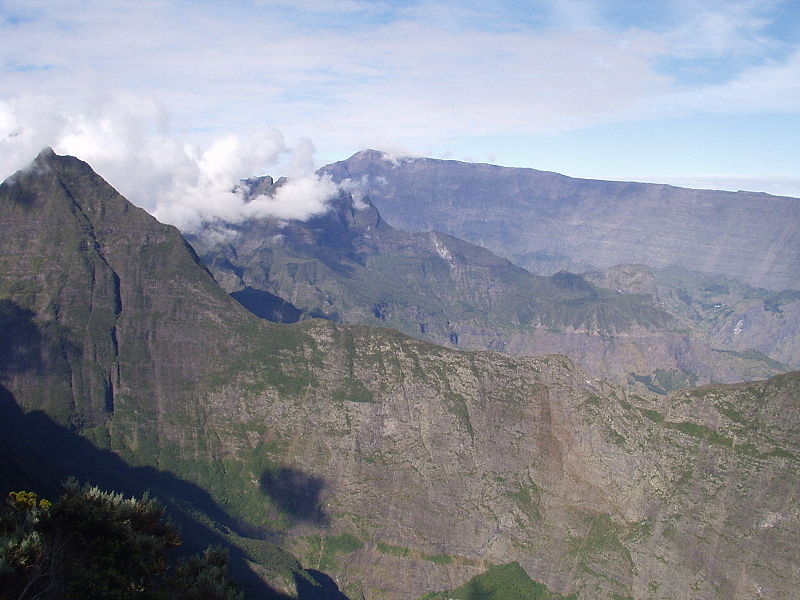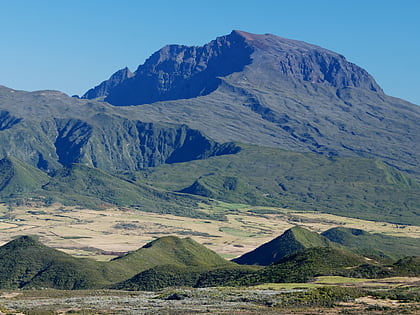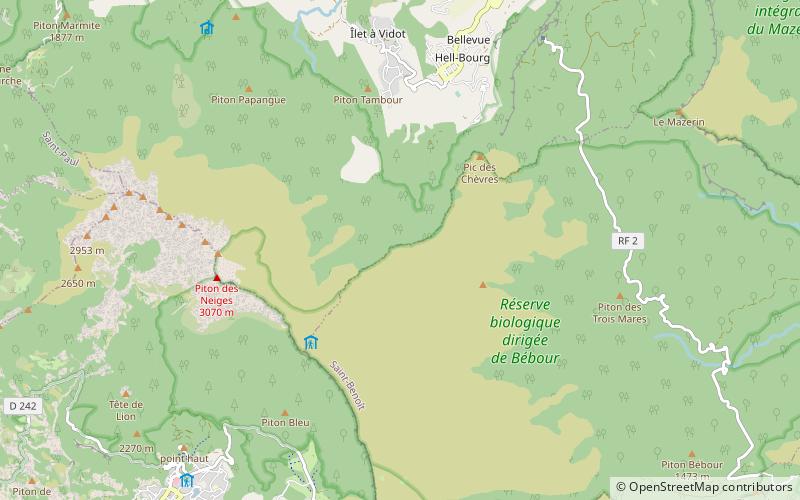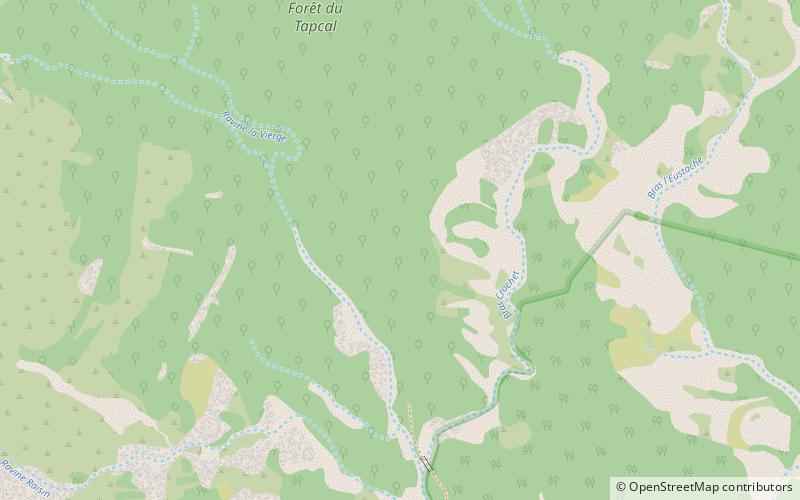Réunion National Park


Facts and practical information
Réunion National Park, a crown jewel of the Indian Ocean, is a protected area that encapsulates the heart of Reunion Island's natural splendor. Designated as a national park in 2007, this haven of biodiversity spans over 1,000 square kilometers, covering approximately 42% of the island's surface area. It is a sanctuary where the raw beauty of volcanic landscapes, lush forests, and cascading waterfalls coalesce to create a hiker's paradise.
The park is renowned for its dramatic terrain, including two towering volcanic peaks: Piton de la Fournaise, one of the world's most active volcanoes, and Piton des Neiges, the highest point in the Indian Ocean at over 3,000 meters. These geological marvels are not only a testament to the island's volcanic origins but also offer some of the most breathtaking vistas imaginable.
The diversity of the park's ecosystems is staggering, with subtropical rainforests, cloud forests, and heathlands that are home to a rich array of endemic flora and fauna. Over a hundred species of birds, a variety of reptiles, and numerous unique plant species can be found within its borders, many of which cannot be seen anywhere else on Earth.
Trekking through Réunion National Park's myriad trails, visitors are treated to an array of natural wonders. The Mafate caldera, accessible only by foot or helicopter, is particularly popular among adventure enthusiasts for its remote beauty and challenging hikes. Meanwhile, the Bélouve Forest offers an enchanting walk through a fairy-tale like misty woodland.
The park's exceptional natural beauty and importance for conservation were recognized in 2010 when it was inscribed as a UNESCO World Heritage site. This prestigious status underlines the park's significance as a hotspot for conservation and a bastion for rare species.
Réunion National Park – popular in the area (distance from the attraction)
Nearby attractions include: Piton des Neiges, Grand Bénare, Gros Morne, Mussard cave.









